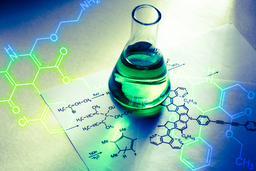Property Modulation with Chemical Transformations
TECHNOLOGY NUMBER: 2019-334
Tags:

OVERVIEW
A method to identify theoretical combinations from linking two chemical building blocks- Reveals chemical transformations that are mechanically plausible but currently unknown
- Furthers the research and implementation of new methods for chemical synthesis reactions
BACKGROUND
Chemical building blocks, or platform chemicals, form the base for more complex products through transformation such as the creation of polymers from monomers. The generation of novel chemicals or novel chemical synthesis reactions is crucial to developing new pharmaceutical or industrial products. The modulation of molecular properties with chemical synthesis is most often achieved by using multiple building blocks, which can be coupled to a core molecule using popular chemical transformations. Two commonly utilized methodologies for chemical transformations are amide coupling and Suzuki coupling, the latter of which is a palladium-catalyzed cross-coupling used in organic synthesis. Still, many more theoretical coupling possibilities may exist for particular building blocks, and one may envision an approach that utilizes the same building blocks with a variety of different transformations rather than seeking out different building blocks. A need exists to explore these alternative transformations in an effort to develop a wider variety of new methods for chemical synthesis.
INNOVATION
Researchers at the University of Michigan have invented a method called “reaction cartography” which identifies all of the possible combinations that could theoretically arise from the linking of two chemical building blocks. This approach defines hundreds of ways that building blocks may be linked, revealing transformations that are currently unknown but mechanically plausible. The inventors aim to merge traditional chemical synthesis reactions with high throughput techniques and data science to accelerate the discovery of novel chemical transformations. The generation of novel chemicals or uncovering new reaction schemes for chemical synthesis is an essential step to developing new pharmaceutical or industrial products. For instance, whereas an amine and carboxylic acid are typically coupled via an amide coupling, and this sole transformation makes up nearly one third of all reactions used to invent pharmaceuticals, the inventors have identified hundreds of other novel ways to couple the same amine and carboxylic acid building blocks. The acceleration of the discovery of novel chemical transformations will not only improve the basic science of understanding chemical synthesis reactions but may also be of great interest for a wide variety of commercial applications, including the development of novel pharmaceuticals, fuels, paints, industrial materials, plastics, agrochemicals, fragrances, or healthcare products.